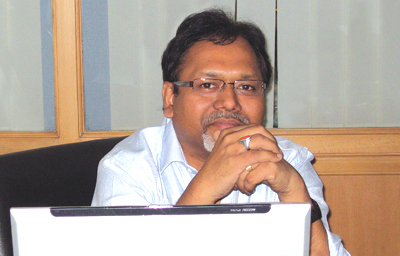INDIAN ARMED FORCES CHIEFS ON OUR RELENTLESS AND FOCUSED PUBLISHING EFFORTS

The insightful articles, inspiring narrations and analytical perspectives presented by the Editorial Team, establish an alluring connect with the reader. My compliments and best wishes to SP Guide Publications.

"Over the past 60 years, the growth of SP Guide Publications has mirrored the rising stature of Indian Navy. Its well-researched and informative magazines on Defence and Aerospace sector have served to shape an educated opinion of our military personnel, policy makers and the public alike. I wish SP's Publication team continued success, fair winds and following seas in all future endeavour!"

Since, its inception in 1964, SP Guide Publications has consistently demonstrated commitment to high-quality journalism in the aerospace and defence sectors, earning a well-deserved reputation as Asia's largest media house in this domain. I wish SP Guide Publications continued success in its pursuit of excellence.
A Word from Editor

India has been extremely accommodating in the demands of Russia that have been construed back home as somewhat skewed and unjust. Experts have been wondering whether it is prudent on India’s part to put all its eggs in the Russian basket.
During the Cold War, India was perceived to be close to the Soviet Union. This proximity, needless to say, had a lot to do with defence cooperation. Deals were on a government-to-government basis, and defence equipment came into India courtesy soft loans and easy non-convertible rupee payments. After the collapse of the Soviet Union, the defence industry in Russia found itself almost on the brink of collapse. The Indo-Russian relationship, however, did not totter. The cooperation between the two countries remained uninterrupted, but the Russians are becoming increasingly hardnosed in their bargaining (see Relook Needed: Page 10). India has, till now, been seen as extremely accommodating in the demands of Russia that have been construed back home as somewhat skewed and unjust. Experts have been wondering whether it is prudent on India’s part to put all its eggs in the Russian basket.
Traditionally, we haven’t seen too many defence deals with European governments or companies. It is in this light that we can see the deal that Anglo-Italian major AgustaWestland struck with the Indian Air Force in March this year (see Comfortable and secure: Page 16). The deal was for the procurement of AW101 helicopters that will ensure a comfortable and secure travel for VVIPs across the country. Many years ago the company had identified India as one of its potential markets for expansion. The strategy seems to have paid off after the long wait. The deal gives European countries enough reason to feel bullish over India.
Shortly before this agreement was inked, Pokharan hosted a spectacular display of firepower demonstration (see Power Play: Page 32) during Vayu Shakti-2010. The exercise by over 100 aircraft was also meant to serve as an aid for commanders and planners to gain better insight into the potential and deployment capabilities of aerial weapons. But as the IAF blasted away targets in this representative battlefield area, did it send out any signal? The Defence Minister categorically said that this was meant only to assure the nation that it was in safe hands.
Included in this issue is a first-hand account of our photojournalist Abhishek Singh’s report from the manufacturing hub of US aeronautical company Lockheed Martin (see Present Future Perfect: Page 27). The company, now engaged in the manufacture of the C-130J aircraft for India as a part of the $1 billion (Rs 4,500 crore) contract with IAF, is now also eyeing the Indian defence market for the supply of F-16IN Super Viper fighter aircraft. Singh during a recent visit to the Atlanta manufacturing unit of the world’s largest defence contractor took a closer look at the first C-130J aircraft tailormade for India.
This issue also introduces a new feature, First. One is about the Boeing A160T demonstrating the unmanned rotorcraft’s ability to resupply frontline troops in rough terrain (see Unmanned Cargo: Page12). The other is about the newsbreak that the world’s first commercially available jetpacks will soon hit the market (see Jetpack paved: Page 8). Hopefully, this will generate more interest among our valuable readers.





